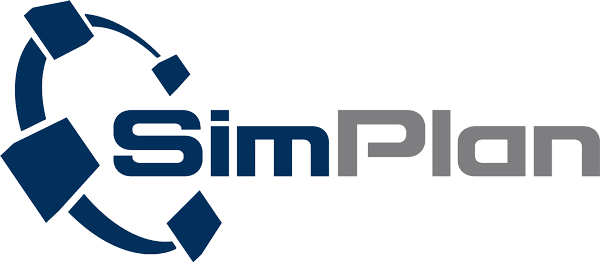
Customised solutions for a sustainable future with green simulation
Green simulation refers to the application of simulation methods to develop environmentally friendly and resource-efficient solutions in production and logistics. By using digital twins and modern simulation tools, companies can not only optimise their processes, but also actively contribute to the reduction of CO2 emissions and energy consumption. The aim is to promote sustainable production processes and increase efficiency while achieving ecological and economic benefits.
The new EU Corporate Sustainability Reporting Directive (CSRD)
With the introduction of the Corporate Sustainability Reporting Directive (CSRD), the requirements for sustainability reporting for companies are increasing significantly. This new EU directive requires companies to document their CO2 emissions transparently and accurately. Particularly affected are companies that fall within the scope of the directive from 2024. This creates a clear framework for increasing accountability in terms of sustainability and requires binding CO2 reporting standards at the EU level.
Objectives and benefits of Green Simulation
The main objective of Green Simulation is to reduce the environmental footprint of companies by using resources more efficiently. This is done by precisely modelling production and logistics processes, which makes it possible to identify and minimise bottlenecks, inefficient processes and unnecessary energy consumption at an early stage.
The use of simulations helps to test various scenarios in terms of their energy consumption (including in relation to the energy mix) and CO2 emissions before changes are made in real production, thus saving time and costs. At the same time, sustainable alternatives are developed that protect the environment and reduce energy consumption.

Energy simulation: saving energy in production and logistics
Energy simulation is a particularly important application of green simulation. Significant amounts of energy are consumed in production and logistics, often due to inefficient processes or non-optimised systems. Energy simulations can be used to analyse these processes in detail and increase the efficiency of machines, systems and entire production lines.
In production, for example, simulation can help to reduce the energy consumption of machines and production lines by avoiding peak loads or identifying energy consumers that can be optimised by simpler measures.
In the logistics area, simulation is useful for analysing transport routes and means of transport in order to minimise energy consumption in the movement of goods. By improving warehouse processes and route planning, fuel consumption is reduced and the CO2 balance is improved.
Fields of application for Green Simulation
- Production: Optimisation of energy consumption in manufacturing processes, reduction of CO2 emissions through efficient machine and plant design.
- Logistics: Improvement of transport routes, reduction of energy consumption through optimised route planning and warehouse management.
- Energy supply: simulation of energy systems for the integration of renewable energies and to increase the efficiency of energy networks.
- Product development: simulation of the environmental impact of products and their manufacturing processes to create environmentally friendly alternatives.
- With Green Simulation, companies create the basis for a sustainable future by effectively combining both ecological and economic goals.
Our solutions for a sustainable future
To facilitate the implementation of green simulation and help companies reduce their energy consumption, we offer customised solutions based on the latest simulation technologies.
One example of our practice-oriented approaches is the specially developed building blocks and building block kits for AnyLogic and Plant Simulation. These building blocks make it possible to integrate and monitor CO2 emissions from production and logistics processes in simulation models. With this user-friendly application, companies can analyse their processes, identify weak points and reduce energy consumption and emissions through targeted adjustments.
In addition, we offer a variety of simulation solutions that are specifically designed to increase energy efficiency and minimise environmental impact. Our team will support you in implementing individual models that are precisely tailored to your requirements and goals. Whether in the production area, in logistics or in the entire value chain – with our tools and expert services, we help you successfully implement your sustainability strategy.
